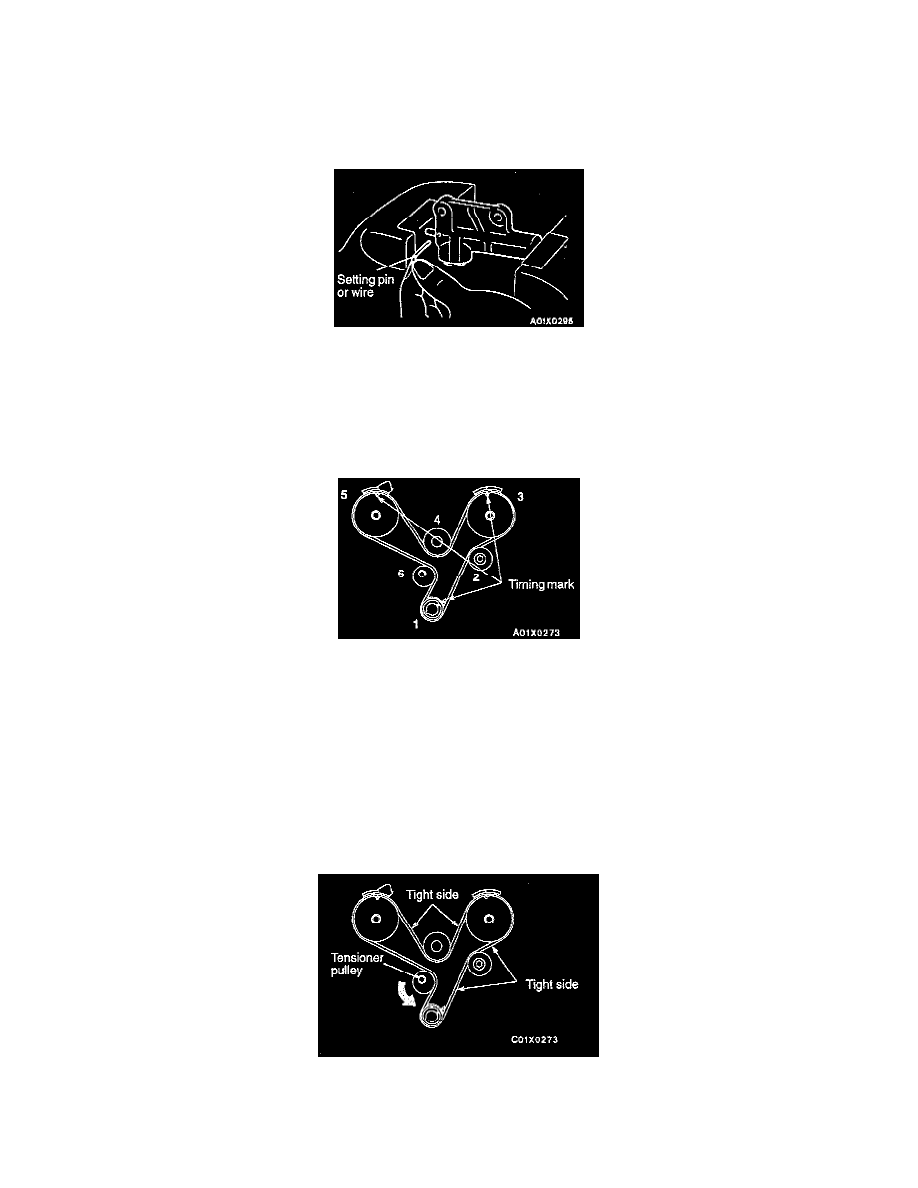Sebring V6-2.5L SOHC 24 Valve (1996)

2. Use a press or vise to compress the push rod of the auto tensioner as slowly as possible. Then align pin hole A of the push rod with pin hole B of
the tensioner cylinder.
CAUTION:
a. Place the auto tensioner at a right angle to the pressing surface of the press or vise.
b. Push in the rod slowly to prevent the push rod from being damaged.
3. Insert setting pin or wire with a diameter of 1.4 mm (0.06 inch) into the aligned pin holes.
NOTE: The wire should be as stiff as possible (such as piano wire, etc.), and should be bent into the shape of an "L".
4. Install the auto tensioner to engine.
CAUTION: Leave the setting pin or wire installed in the auto tensioner.
5. Align the timing marks of each sprocket.
NOTE: At this time, No. 1 cylinder should be at the top dead center on compression stroke.
6. Use bulldog clips to fix the timing belt in the following procedure to prevent the belt from slacking. 1. Crankshaft sprocket --> 2. Idler pulley -->
3. Front bank side camshaft sprocket --> 4. Water pump pulley --> 5. Rear bank side camshaft sprocket --> 6. Tensioner pulley
CAUTION: Since the camshaft is turned by the reaction of valve spring, be careful not to get your fingers caught between the sprocket and
timing belt.
7. Apply force counterclockwise to the camshaft sprocket on the rear side. When the tight side of the belt is fault, check that the timing marks are all
aligned.
8. Gently raise the tensioner pulley as shown by the arrow, so that the belt does not sag, and temporarily tighten the center bolt.
9. Turn the crankshaft a 1/4 turn counterclockwise, and then turn it clockwise to the position where the timing marks are aligned.
